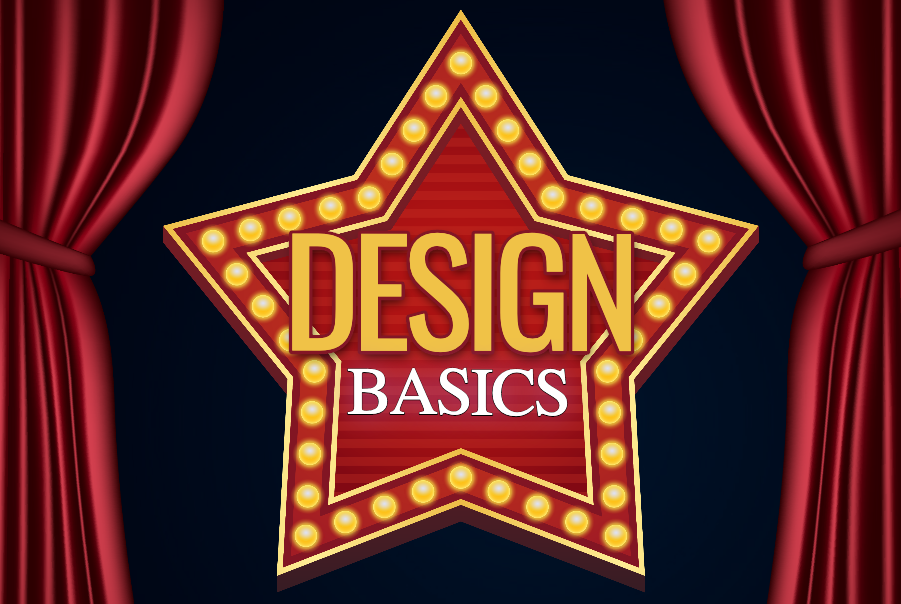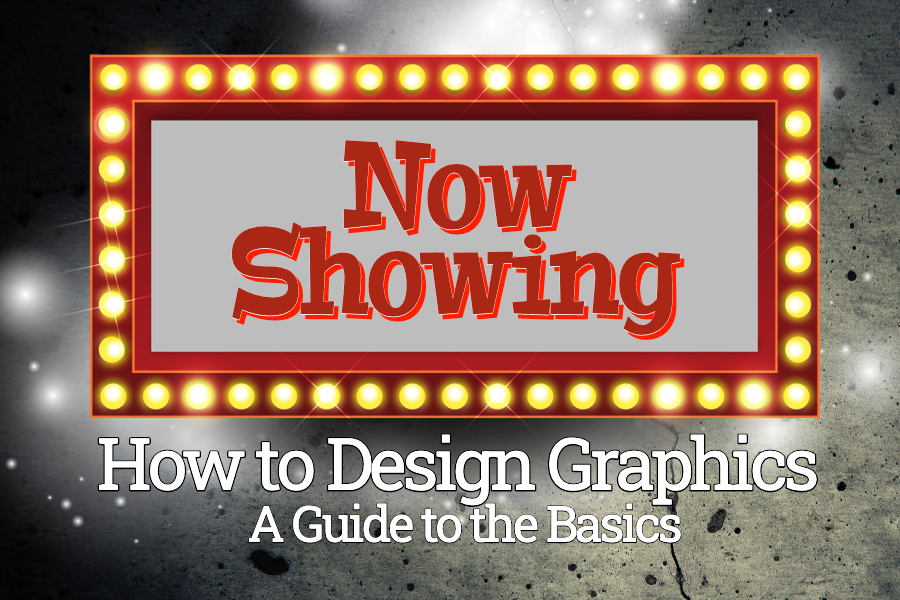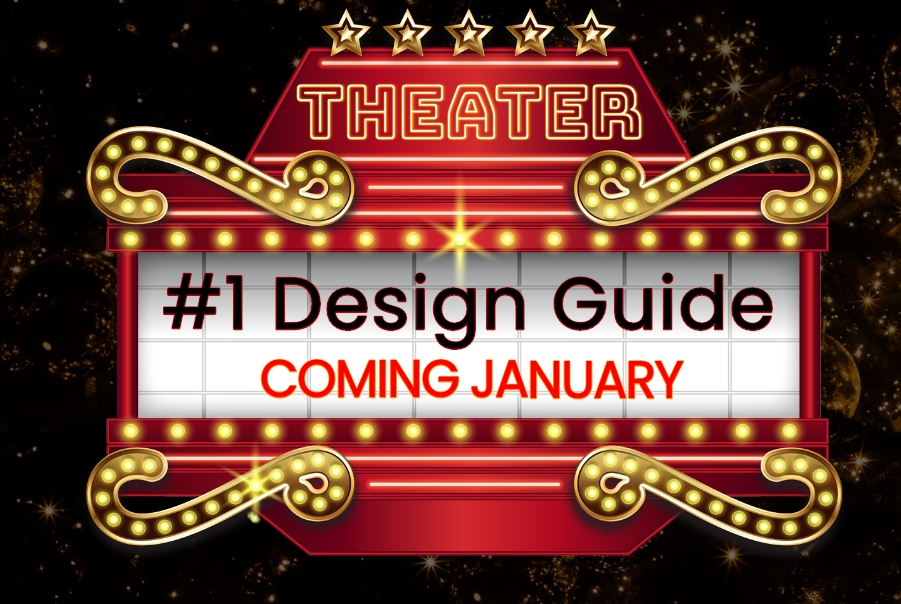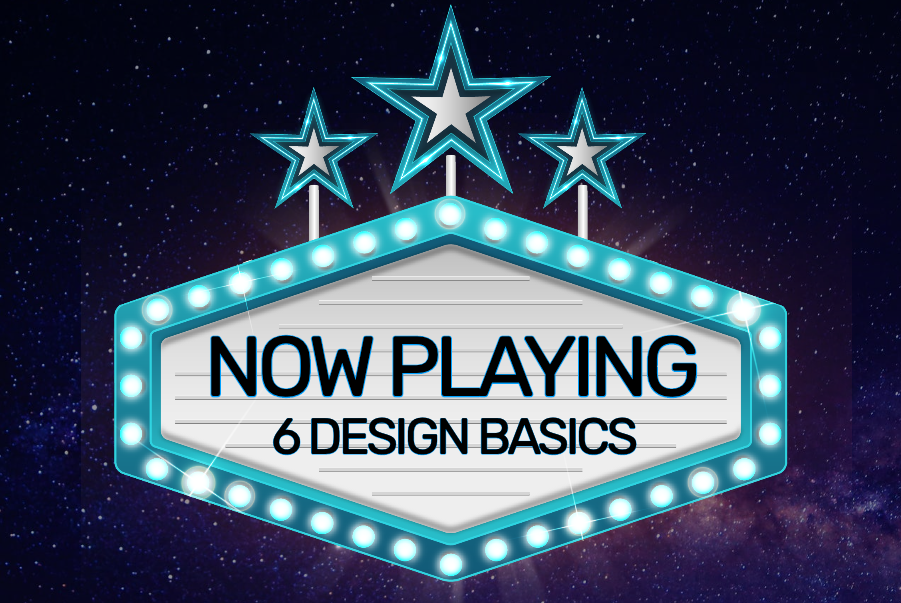You know you’re a beginning designer when you spend too much time moving around graphic design elements but are still unhappy with your final image. And, if you’re an entrepreneur or small business tackling design as well as formulating a brand identity and brand message, it can seem a bit overwhelming.
Still, creating your own graphic designs saves you a ton of money and time getting every image you need for your small business right when you need it.
So here are six simple graphic design basics you need to know to create stunning designs fast:
- White Space
- Color
- Value
- Lines
- Shapes
- Textures
Continue reading below to understand how to use these helpful graphic design basics to make creating what you need for your small business easy… and how they can help get your brand message across to others.
Then you can get more creative with graphic designs for your marketing, blog, and website… without spending too much time working on a design only to realize it doesn’t look good or send the right message.
Plus, it makes it a no-brainer when you have access to an easy creation tool with pre-designed templates.
As an entrepreneur or small business owner, you’re probably not a professional graphic designer. So, it’s best to start creating images with pre-designed templates which make it fast and easy. The best graphic design templates will also help you create graphics that apply the six design concepts listed in this article.
All of the image examples below are from The Greatest Show templates (Right now, when you buy The Greatest Show Templates, you’ll get The Graphics Creator software for FREE).
Here are the Six Graphic Design Basics Every Small Business Needs to Know:
1. “White Space”
Space will make or break your graphic design… really! “White space” (also called “negative space”) refers to all of the areas in your design only filled with the background. It doesn’t mean that your background is white, although it could be.
Instead, it’s more about keeping space around the graphic elements and text of your design in order to give it a clean look and make your message stand out. This is especially important when creating your small business brand image and logo design. Simple is better.
You’ll notice whether a design is visually pleasing to the eye, even though you’re not a graphic designer. It’s super important to pay attention to this because it determines how your visual content is perceived by your target audience.
Okay, so what’s actually wrong with putting lots of elements in your designs?
There are just too many visuals going on so your message doesn’t stand out to your audience. Let’s look at it this way. If your room is cluttered with boxes and tools, do you have a hard time finding your keys? Most likely, right?!
The same goes for graphic design. So keep it simple by using just a few design elements placed in a manner in which there is a good deal of background space. This will help your text, photo, or important graphic design elements stand out!
How to Use White Space
Check out the design below. It looks clean and professional. And it follows the graphic design basics we’re talking about in this article, including the use of white space.

2. Color
Color is extremely powerful. It can make you feel happy, sad, excited, or even stressed out! And this is still true when colors are used in a design. A particular color can have a big impact on how small businesses’ brand voice influences their customers.
For example, red can draw feelings of passion or power while a soft blue can actually decrease heart rate and have a calming effect.
Mastering the color scheme in your marketing design could play a crucial role in designing good graphic design and great design. As you become more experienced as a designer, you might even want to understand other color concepts such as hue, tone, and saturation.
For now, however, just focus on how a color might influence your brand story.
Choosing the right brand colors for your marketing graphics could make the difference between getting a sale or having a potential customer leave your site empty-handed.
In fact, color plays a huge part in the brand identity of the most successful companies. What color is the McDonald’s arch? Everyone knows that, right?!
How to Use Color in Graphic Design
The color red is powerful, attention-getting, and calls to your audience to take action. Check out this image in which red is used in different forms to create an impact for small businesses:

3. Value
“Value” represents how dark or light a design is. It sets the mood of the design. When considering the target audience who’ll be viewing your design, you’ll want to determine whether a lighter or darker design is best.
You can include the same basic elements in a unique graphic design (your logo design, objects, text) by creating a very different feeling based on the light or dark colors you use.
Example of the Design Principle of Value
Check out the red and blue graphic examples above. The blue design has a much brighter and more relaxed mood, giving it a much more desirable value.
4. Lines
First, notice how lines can play a role in good graphic design. They’re most often used to separate different sections of a design and to give the viewer a focal point.
Lines can be long, short, thick, thin, straight, curved, dashed, textured, or any color. They create different visual effects and, therefore, give a unique visual impact, depending on how they’re used.
For example, a thin, blue line can elicit a feeling of calm and unity. However, a thick, black line, will draw attention in a powerful way.
Color and Value (from above) also play a significant role here. Whereas darker lines may be easier to see and grab more attention, lighter lines may bring a more minimalistic or subtle feel to the design.
This is why lines, as simple as they seem, are still one of the most important graphic design basics.
How to Use Lines in Graphic Design
Take a look at how multiple, bold lines around text can draw in your target audience. Using similar lines throughout your brand image will help you seal your brand identity.

5. Shapes
Every design uses at least one “shape”. The shape, or “form” of a design helps it to stand out. You can use squares, rectangles, circles, triangles, or any abstract shape.
Shapes can be used somewhat like lines. They’re both associated with different movements and flow. Therefore, shapes are a basic necessity of a design that improves an image’s uniqueness. So, while squares are often seen as very structured, circles are associated with movement and continuation. Using these elements, therefore, can actually change a viewer’s perception.
And, small businesses need to present products or services in a way that holds their audience’s attention. Therefore, using the shape in your design that makes the statement you want is important to your business.
Small businesses often use shapes in graphic designs to improve their brand identity on social media channels and other visual platforms.
How Shapes Can Be Used in an Image
Take a look at how this unique shape (as well as the bright color and solid lines) invite your audience to find out more about your offer.
6. Textures
Textures are wonderful, easy ways of making a graphic unique! You can use a textured background in place of a single-colored background to give the design a totally different visual impact. It can also be used within the text for an unusual look and feel.
A texture can be subtle, where a viewer would have to look closely to see that there’s a pattern. Or, it can be blatantly obvious, having a more powerful visual impact.
There are many styles of textures. These include wood, brick, concrete, paper, stone, fabric, or natural elements, such as grass, bark, or water. If used sparingly, they’ll be subtle. But if used liberally, the texture can be quite pronounced.
If you’re an entrepreneur who doesn’t have a lot of experience with design, you may not realize the impact that using textures can have on your designs. So, spend some time playing around with textures using the same objects or elements to see the amazing differences.
How to Introduce Texture in Graphic Design

Here are a few other ideas that’ll complement the previous six design basics and help you bring order to your design.
Other Important Graphic Design Concepts
Being a small business entrepreneur, it’s understandable that going beyond learning the basics of graphic design is not something you want to spend a lot of time on. However, you also wouldn’t wear one shoe that’s higher than the other and feel off-balance with each step, right?
So, these last few design principles are worth considering and won’t take up a lot of space in your probably overcrowded mind.
Balance, Alignment, and Proximity
To balance your design, you’ll need to distribute the elements evenly in order for it to look like a professional has created your design.
“Balance” can be symmetrical (where elements are spaced evenly on both sides of the design) or asymmetrical (in which elements are contrasting in order to give it an even flow… dark elements balanced by light ones).
Alignment and proximity will ensure that you’re placing your elements in an ordered fashion. You’ll want them to look good together because they’re grouped based on relationship. This will keep it from looking cluttered.
One way of doing this is to group related elements together. Another way is to connect elements by color, font, or size.
Conclusion
Alrighty, are your creative juices flowing? You can now create your own stunning images with these 6 graphic design basics that any small business or entrepreneur can follow.
Now it’s time to put what you’ve learned into action.
Create your next design with the easy-to-use templates and designs you’ve seen here in The Graphics Creator’s Greatest Show templates. And, you can use all of the design concepts you’ve just learned, even if you’re a small business and not a designer.




